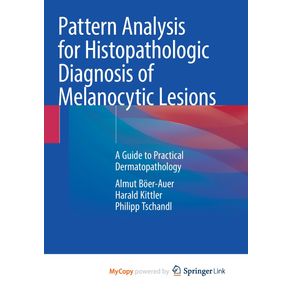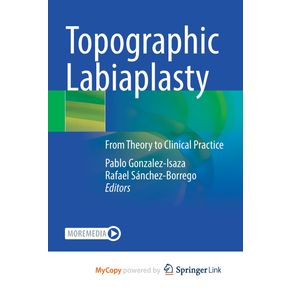| Origem | Literatura Estrangeira |
|---|---|
| Quantidade de Páginas | 200 |
| Acabamento | Capa Comum |
| Autores | Bruce W. Gesslein |
| Idioma | Inglês |
| Edição | 0 |
| Selo | Chemical Publishing |
 Mudras Que Curam
Mudras Que Curam
Pensamento
R$ 42,00 R$ 34,44 à vista Pensar, comer, se amar
Pensar, comer, se amar
Editora Viseu
R$ 35,90 à vista Cigarro
Cigarro
Editora Viseu
R$ 52,90 à vista Só há perdão se houver amor!
Só há perdão se houver amor!
Editora Viseu
R$ 43,90 à vista Maternidade em cena
Maternidade em cena
Editora Viseu
R$ 34,90 à vista Guia simplificado para cuidadores de idosos e acompanhantes
Guia simplificado para cuidadores de idosos e acompanhantes
Editora Viseu
R$ 34,90 à vista Alquimia da alma
Alquimia da alma
Editora Viseu
R$ 56,90 à vista A alma do cuidador
A alma do cuidador
Editora Viseu
R$ 49,90 à vista Envelhecimento e saúde; Programa de atividade física
Envelhecimento e saúde; Programa de atividade física
Editora Viseu
R$ 57,90 à vista CÓMO MATAR DE HAMBRE AL CÁNCER
CÓMO MATAR DE HAMBRE AL CÁNCER
Antonio Martínez
R$ 149,83 ou até 2x sem juros Pattern Analysis for Histopathologic Diagnosis of Melanocytic Lesions
Pattern Analysis for Histopathologic Diagnosis of Melanocytic Lesions
Springer Nature B.V.
R$ 332,83 ou até 3x sem juros The Human Connectome
The Human Connectome
Springer Nature B.V.
R$ 341,59 ou até 3x sem juros Fundamentals of Critical Care
Fundamentals of Critical Care
John Wiley & Sons
R$ 392,97 ou até 3x sem juros Cleansing the Fatherland
Cleansing the Fatherland
Hopkins Fulfillment Service
R$ 285,95 ou até 3x sem juros The Perspectives of Psychiatry
The Perspectives of Psychiatry
Hopkins Fulfillment Service
R$ 279,46 ou até 3x sem juros Ayurveda: A ciência da Autocura
Ayurveda: A ciência da Autocura
Editora Ground
R$ 58,90 à vista Cigarro
Cigarro
Editora Viseu
R$ 52,90 à vista Detox essencial
Detox essencial
Editora Viseu
R$ 31,90 à vista Cartas de cuidar
Cartas de cuidar
Editora Viseu
R$ 48,90 à vista A alma do cuidador
A alma do cuidador
Editora Viseu
R$ 49,90 à vista O encostamento de ex-militares temporários do exército brasileiro
O encostamento de ex-militares temporários do exército brasileiro
Editora Viseu
R$ 51,90 à vista Novos hábitos de vida com Dr. Rafael Angelim
Novos hábitos de vida com Dr. Rafael Angelim
Editora Viseu
R$ 35,90 à vista TDAH Descomplicado: Tudo que os pais devem saber para ajudar seus filhos
TDAH Descomplicado: Tudo que os pais devem saber para ajudar seus filhos
Editora Viseu
R$ 45,90 à vista O cérebro 4.0: Como usar sua mente para uma vida mais saudável, feliz e próspera
O cérebro 4.0: Como usar sua mente para uma vida mais saudável, feliz e próspera
Editora Viseu
R$ 38,90 à vista Vagus Nerve
Vagus Nerve
Draft2Digital
R$ 136,71 ou até 2x sem juros Understanding Cancer
Understanding Cancer
Springer Nature B.V.
R$ 316,01 ou até 3x sem juros Keratoconus
Keratoconus
Springer Nature B.V.
R$ 373,34 ou até 3x sem juros The Concepts of Psychiatry
The Concepts of Psychiatry
Hopkins Fulfillment Service
R$ 272,29 ou até 3x sem juros Medicine and Religion
Medicine and Religion
Hopkins Fulfillment Service
R$ 265,46 ou até 3x sem juros Cleansing the Fatherland
Cleansing the Fatherland
Hopkins Fulfillment Service
R$ 285,95 ou até 3x sem juros Mudras Que Curam
Mudras Que Curam
Pensamento
R$ 42,00 R$ 34,44 à vista De tentante a gestante: Como a medicina chinesa iluminou minha caminhada á maternidade
De tentante a gestante: Como a medicina chinesa iluminou minha caminhada á maternidade
Editora Viseu
R$ 65,90 à vista Pensar, comer, se amar
Pensar, comer, se amar
Editora Viseu
R$ 35,90 à vista Só há perdão se houver amor!
Só há perdão se houver amor!
Editora Viseu
R$ 43,90 à vista Alquimia da alma
Alquimia da alma
Editora Viseu
R$ 56,90 à vista Ensaios de psicologia hospitalar
Ensaios de psicologia hospitalar
Editora Viseu
R$ 32,90 à vista TDAH Descomplicado: Tudo que os pais devem saber para ajudar seus filhos
TDAH Descomplicado: Tudo que os pais devem saber para ajudar seus filhos
Editora Viseu
R$ 45,90 à vista Implants and Oral Rehabilitation of the Atrophic Maxilla
Implants and Oral Rehabilitation of the Atrophic Maxilla
Springer Nature B.V.
R$ 316,95 ou até 3x sem juros Topographic Labiaplasty
Topographic Labiaplasty
Springer Nature B.V.
R$ 343,04 ou até 3x sem juros Clinical Guide to Heart Transplantation
Clinical Guide to Heart Transplantation
Springer Nature B.V.
R$ 331,76 ou até 3x sem juros Pattern Analysis for Histopathologic Diagnosis of Melanocytic Lesions
Pattern Analysis for Histopathologic Diagnosis of Melanocytic Lesions
Springer Nature B.V.
R$ 332,83 ou até 3x sem juros Medical Terminology
Medical Terminology
MedicFluent
R$ 125,20 ou até 2x sem juros Medicalization of Society
Medicalization of Society
Hopkins Fulfillment Service
R$ 253,69 ou até 3x sem juros Fundamentals of Critical Care
Fundamentals of Critical Care
John Wiley & Sons
R$ 392,97 ou até 3x sem juros Bee Venom Therapy
Bee Venom Therapy
Repro India Limited
R$ 81,19 à vista